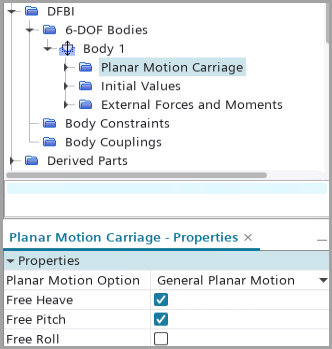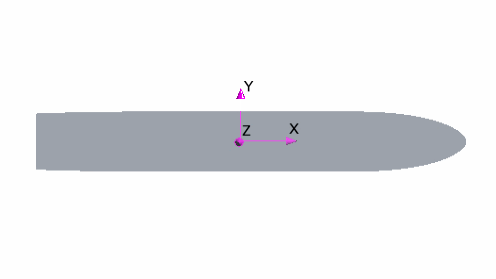Defining the Motion of the Hull as a 6-DOF Body
The hull is a rigid body that moves at a constant velocity of 8 knots. In addition to the prescribed motion, the hull moves in response to the force exerted by the surrounding fluid.
-
The velocity of a boat is typically measured in knots. To add new units in
Simcenter STAR-CCM+:
-
For convenience, create a parameter for the speed of the hull:
-
To define the 6-DOF body, first assign a DFBI motion model to the fluid region
containing the hull boundary:
- Right-click the node and select .
- Select the node and set Motion to the created DFBI Rotiation and Translation.
-
To define the 6-DOF body:
To simplify the initial value setup of the 6-DOF body, you
create an initial body coordinate system with the origin at the center of gravity of
the body and the axes reflecting the initial orientations of the body.
-
To create an initial body coordinate system:
-
Select the node and set the following properties for the 6-DOF body:
Node Property Setting Attachment Point Coordinate System Laboratory → InitialBodyCoordinateSystem Position [0.0, 0.0, 0.0] Specifies the position where the body is initially attached to the planar motion carriage. In this case, the attachment point is the center of mass of the body.
Center of Mass Coordinate System Laboratory → InitialBodyCoordinateSystem Position [0.0, 0.0, 0.0] Moment of Inertia Coordinate System Laboratory → InitialBodyCoordinateSystem Diagonal Components [3.0E9, 4.0E10, 4.0E10] Orientation Coordinate System Laboratory → InitialBodyCoordinateSystem - Select the node and make sure that Gravity Force is activated.
- Save the simulation.




